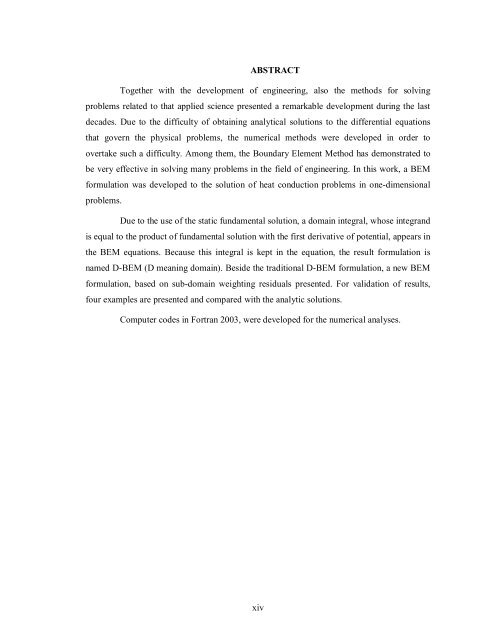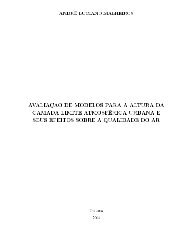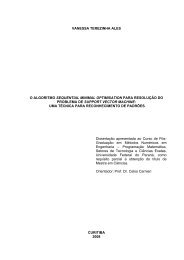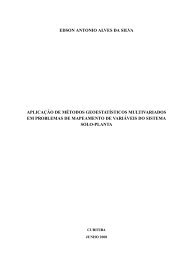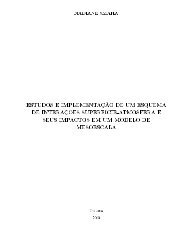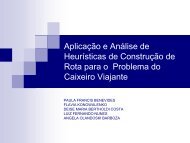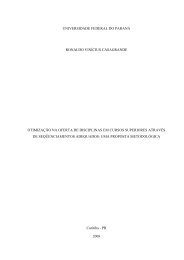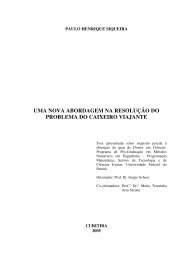244 - PPGMNE - Universidade Federal do Paraná
244 - PPGMNE - Universidade Federal do Paraná
244 - PPGMNE - Universidade Federal do Paraná
You also want an ePaper? Increase the reach of your titles
YUMPU automatically turns print PDFs into web optimized ePapers that Google loves.
ABSTRACT<br />
Together with the development of engineering, also the methods for solving<br />
problems related to that applied science presented a remarkable development during the last<br />
decades. Due to the difficulty of obtaining analytical solutions to the differential equations<br />
that govern the physical problems, the numerical methods were developed in order to<br />
overtake such a difficulty. Among them, the Boundary Element Method has demonstrated to<br />
be very effective in solving many problems in the field of engineering. In this work, a BEM<br />
formulation was developed to the solution of heat conduction problems in one-dimensional<br />
problems.<br />
Due to the use of the static fundamental solution, a <strong>do</strong>main integral, whose integrand<br />
is equal to the product of fundamental solution with the first derivative of potential, appears in<br />
the BEM equations. Because this integral is kept in the equation, the result formulation is<br />
named D-BEM (D meaning <strong>do</strong>main). Beside the traditional D-BEM formulation, a new BEM<br />
formulation, based on sub-<strong>do</strong>main weighting residuals presented. For validation of results,<br />
four examples are presented and compared with the analytic solutions.<br />
Computer codes in Fortran 2003, were developed for the numerical analyses.<br />
xiv


